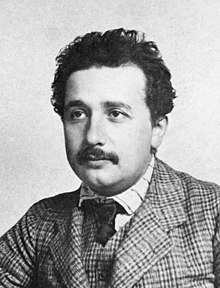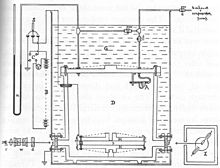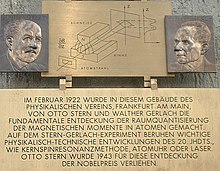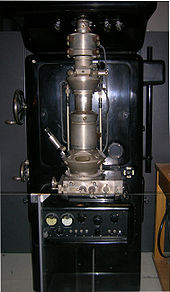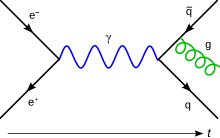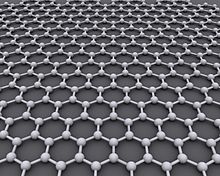19th century
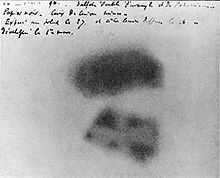
- 1801 – Thomas Young establishes that light made up of waves with his Double-slit experiment.
- 1859 – Gustav Kirchhoff introduces the concept of a blackbody and proves that its emission spectrum depends only on its temperature.[1]
- 1860–1900 – Ludwig Eduard Boltzmann, James Clerk Maxwell and others develop the theory of statistical mechanics. Boltzmann argues that entropy is a measure of disorder.[1]
- 1877 – Boltzmann suggests that the energy levels of a physical system could be discrete based on statistical mechanics and mathematical arguments; also produces the first circle diagram representation, or atomic model of a molecule (such as an iodine gas molecule) in terms of the overlapping terms α and β, later (in 1928) called molecular orbitals, of the constituting atoms.
- 1885 – Johann Jakob Balmer discovers a numerical relationship between visible spectral lines of hydrogen, the Balmer series.
- 1887 – Heinrich Hertz discovers the photoelectric effect, shown by Einstein in 1905 to involve quanta of light.
- 1888 – Hertz demonstrates experimentally that electromagnetic waves exist, as predicted by Maxwell.[1]
- 1888 – Johannes Rydberg modifies the Balmer formula to include all spectral series of lines for the hydrogen atom, producing the Rydberg formula which is employed later by Niels Bohr and others to verify Bohr's first quantum model of the atom.
- 1895 – Wilhelm Conrad Röntgen discovers X-rays in experiments with electron beams in plasma.[1]
- 1896 – Antoine Henri Becquerel accidentally discovers radioactivity while investigating the work of Wilhelm Conrad Röntgen; he finds that uranium salts emit radiation that resembled Röntgen's X-rays in their penetrating power. In one experiment, Becquerel wraps a sample of a phosphorescent substance, potassium uranyl sulfate, in photographic plates surrounded by very thick black paper in preparation for an experiment with bright sunlight; then, to his surprise, the photographic plates are already exposed before the experiment starts, showing a projected image of his sample.[1][2]
- 1896-1897 – Pieter Zeeman first observes the Zeeman splitting effect by applying a magnetic field to light sources.[3]
- 1896–1897 Marie Curie (née Skłodowska, Becquerel's doctoral student) investigates uranium salt samples using a very sensitive electrometer device that was invented 15 years before by her husband and his brother Jacques Curie to measure electrical charge. She discovers that rays emitted by the uranium salt samples make the surrounding air electrically conductive, and measures the emitted rays' intensity. In April 1898, through a systematic search of substances, she finds that thorium compounds, like those of uranium, emitted "Becquerel rays", thus preceding the work of Frederick Soddy and Ernest Rutherford on the nuclear decay of thorium to radium by three years.[4]
- 1897:
- Ivan Borgman demonstrates that X-rays and radioactive materials induce thermoluminescence.
- J. J. Thomson's experimentation with cathode rays led him to suggest a fundamental unit more than a 1,000 times smaller than an atom, based on the high charge-to-mass ratio. He called the particle a "corpuscle", but later scientists preferred the term electron.
- Joseph Larmor explained the splitting of the spectral lines in a magnetic field by the oscillation of electrons.[5][6]
- Larmor, created the first solar system model of the atom in 1897. He also postulated the proton, calling it a "positive electron." He said the destruction of this type of atom making up matter “is an occurrence of infinitely small probability.”[7]
- 1899 to 1903 – Ernest Rutherford investigates radioactivity. He coins the terms alpha and beta rays in 1899 to describe the two distinct types of radiation emitted by thorium and uranium salts. Rutherford is joined at McGill University in 1900 by Frederick Soddy and together they discover nuclear transmutation when they find in 1902 that radioactive thorium is converting itself into radium through a process of nuclear decay and a gas (later found to be 4
2He
); they report their interpretation of radioactivity in 1903.[8] Rutherford becomes known as the "father of nuclear physics" with his nuclear atom model of 1911.[9]
